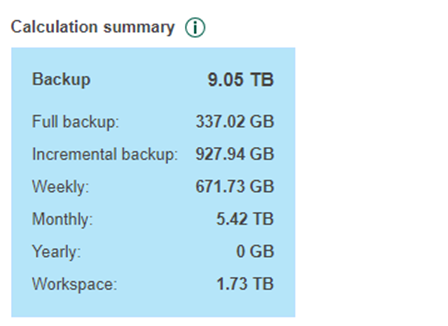Disaster Recovery Data Growth: How to Manage Your Storage Needs
Disaster Recovery (DR) is a vital process for any business that relies on data and IT systems. DR involves creating and maintaining backups of your data and applications enabling you the ability to restore them in case of a disaster, such as a cyberattack, fire, flood or human error.
DR is not a one-time activity. It requires constant monitoring and updating as your data and applications change and grow over time. It is important that AhelioTech’s clients understand how DR data growth affects your storage needs and how we can help you manage it effectively.
DR Data Growth: What Causes It?
DR data growth is the increase in the amount of data that you need to back up and store for DR purposes. There are several factors that contribute to DR data growth, such as:
– Data Creation: As your business generates more data from various sources, such as transactions, customer interactions, analytics, general business activity, etc., you need to back up more data for DR purposes.
– Data Retention: Depending on your industry and regulatory requirements, you may need to retain your data for a regulated period of time, such as months or years. This means that you need to store more data for longer periods of time for DR purposes.
– Data Change: As your data and applications change over time, due to updates, modifications, deletions, etc., you need to back up the changes for DR purposes. This means that you need to store more versions of your data and applications for DR purposes.
– Data Protection: As your data becomes more valuable and sensitive, you may need to protect it with encryption, compression, deduplication, etc. These techniques can impact the storage space required for your data, but they also add some overhead and complexity to your backup process.
DR Data Growth: How to Measure It?
DR data growth can be measured by using metrics such as:
– Backup Size: The total amount of data that you back up for DR purposes.
– Backup Frequency: The number of times that you back up your data for DR purposes.
– Backup Duration: The time that it takes to complete a backup for DR purposes.
– Backup Window: The period during which you can perform a backup for DR purposes without affecting your business operations.
– Recovery Point Objective (RPO): The maximum amount of data that you can afford to lose in case of a disaster. It determines how often you need to back up your data for DR purposes.
– Recovery Time Objective (RTO): The maximum amount of time that you can afford to spend on restoring your data and applications in case of a disaster. It determines how fast you need to recover your data and applications for DR purposes.
Below is an example of average data change and growth percentages over a single year. If your source data size starts out at 3TB, within a single year that data could grow to just over 9TB of off-site storage. That growth will result in increased storage costs as space is consumed at datacenter.


DR Data Growth: How to Manage It?
DR data growth can pose several challenges for your business, such as:
– Increased Storage Costs: As you need to store more data for DR purposes, you may need to invest in more storage hardware and software, as well as maintenance and support services.
– Reduced Backup Performance: As you need to back up more data for DR purposes, you may experience longer backup times, larger backup windows, and higher network bandwidth consumption.
– Reduced Recovery Performance: As you need to recover more data for DR purposes, you may experience longer recovery times, larger recovery windows and higher network bandwidth consumption.
– Increased Complexity: As you need to manage more data for DR purposes, you may face more challenges in terms of backup policies, backup schedules, backup methods, backup locations, backup testing, backup verification, etc.
To overcome these challenges, you need to adopt some best practices for managing your DR data growth, such as:
– Assess Your Current Situation: Understand your current data and application landscape, as well as your business and regulatory requirements. Measure your current DR data growth metrics and identify the sources and causes of your DR data growth.
– Define Your Objectives: Define your desired RPO and RTO levels for each of your data and application categories. Align your DR objectives with your business objectives and priorities.
– Choose Your Strategy: Choose the most suitable backup strategy for each of your data and application categories. Consider factors such as backup frequency, backup duration, backup window, backup location, backup method, etc. Consider the trade-offs between different backup strategies in terms of cost, performance, reliability, security, etc.
– Optimize Your Storage: Optimize your storage utilization and efficiency by using techniques such as encryption, compression, deduplication, tiering, archiving, etc. Monitor and manage your storage capacity and performance regularly.
– Test and Verify Your Backups: Test and verify your backups periodically by performing restore tests and audits. Update and document your backup policies and procedures regularly.
DR data growth is inevitable for any business that relies on data and IT systems. Contact AhelioTech today for ways to manage it effectively. With Best Practice Policies, you can ensure that your business can recover from any disaster quickly and smoothly, while minimizing the impact on your budget and operations.


